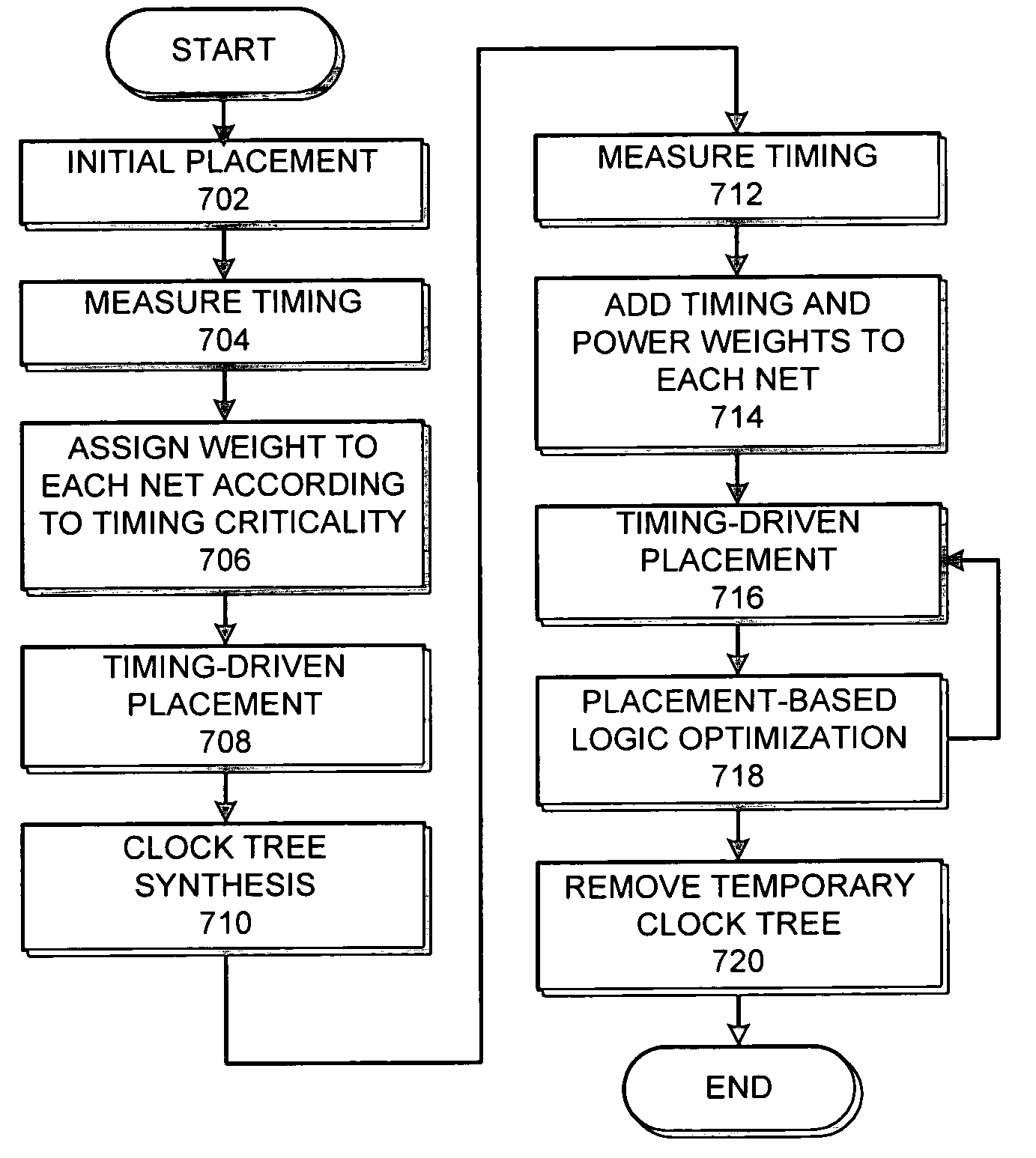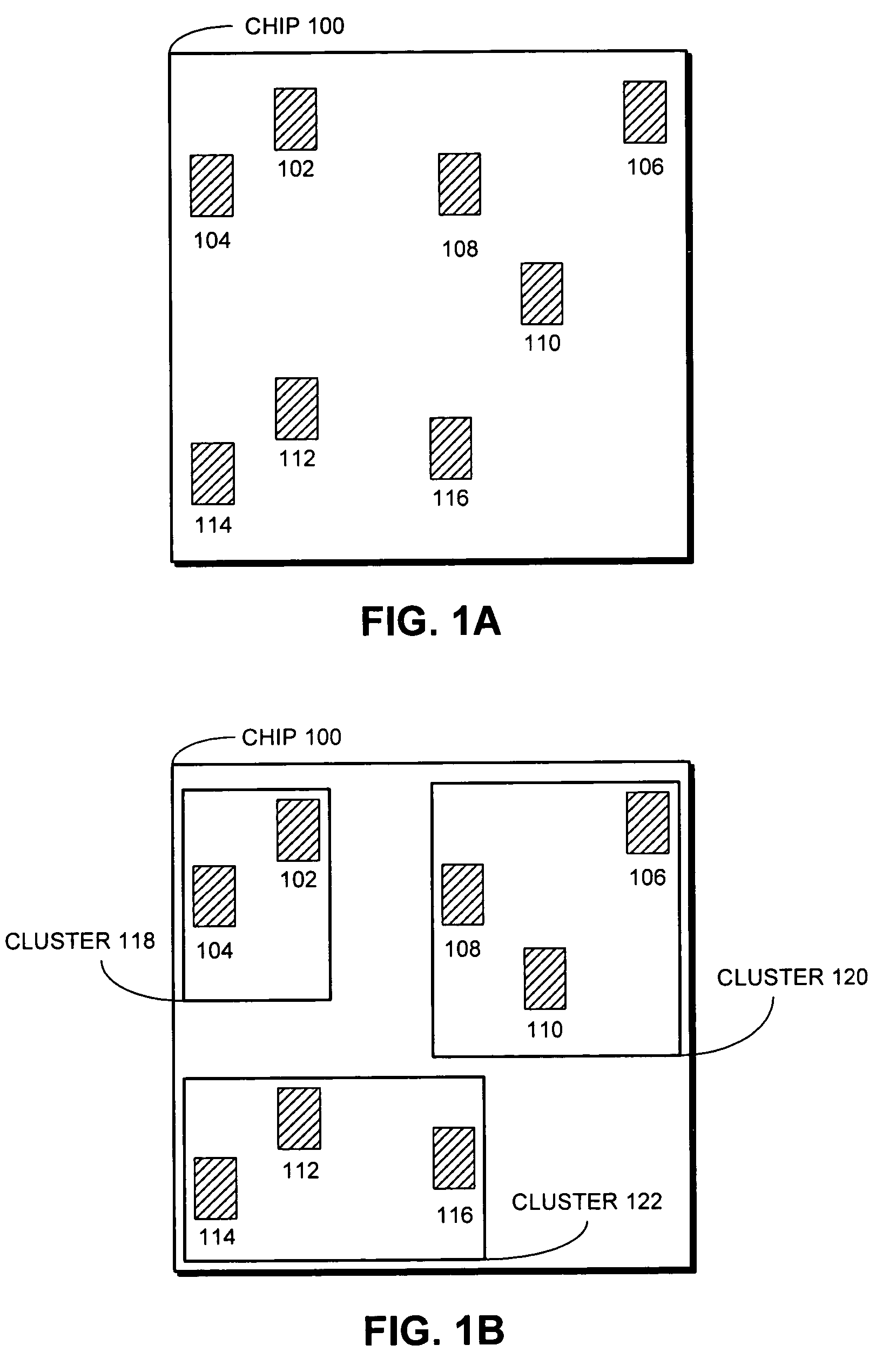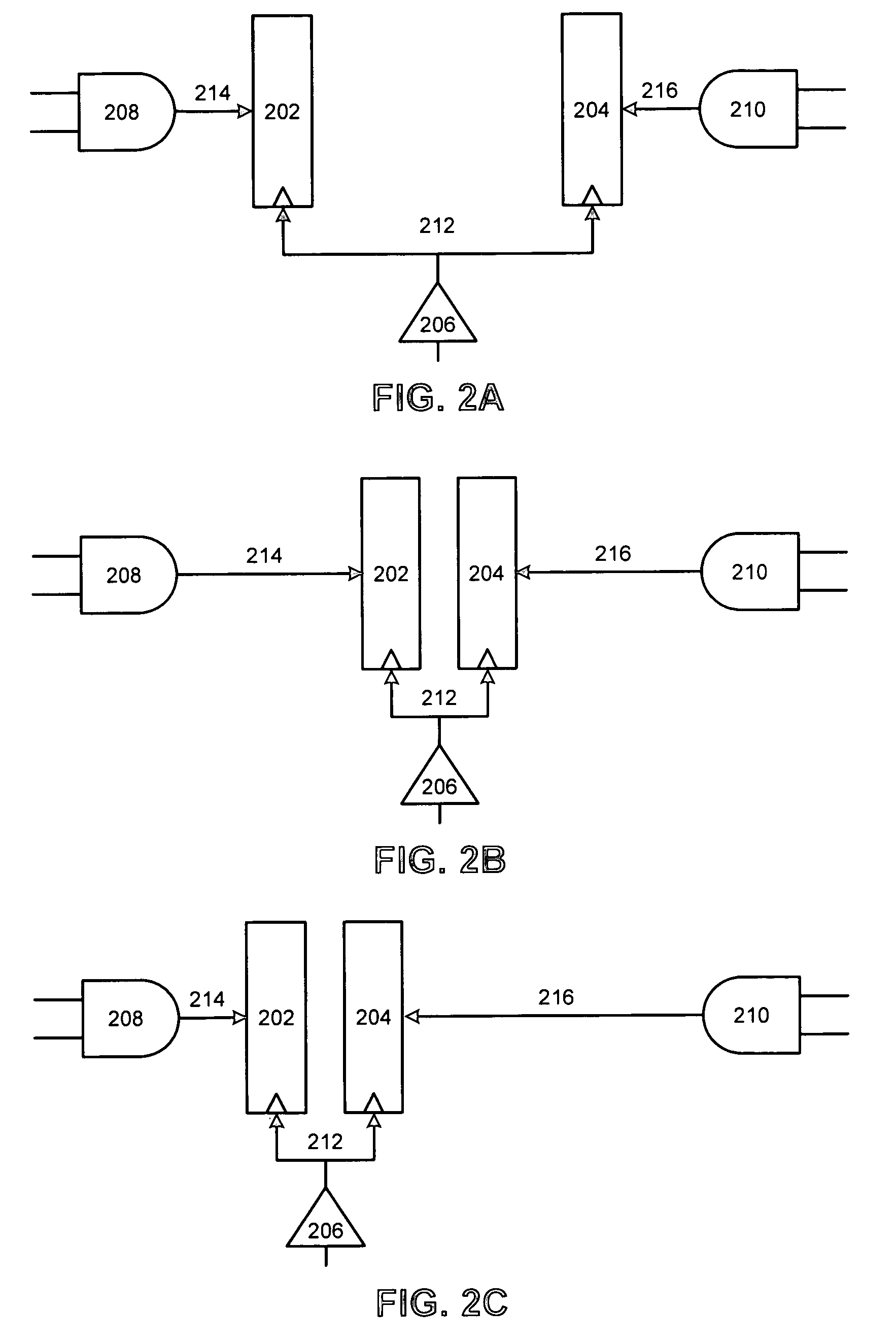Method and apparatus for reducing power consumption in an integrated circuit chip
a technology of integrated circuits and power consumption, applied in the field of integrated circuit power consumption reduction techniques, can solve the problems of increasing power consumption, increasing power consumption, and increasing the difficulty of reducing so as to reduce power consumption in integrated circuits and optimize the placement of registers
- Summary
- Abstract
- Description
- Claims
- Application Information
AI Technical Summary
Benefits of technology
Problems solved by technology
Method used
Image
Examples
Embodiment Construction
[0031]The following description is presented to enable any person skilled in the art to make and use the invention, and is provided in the context of a particular application and its requirements. Various modifications to the disclosed embodiments will be readily apparent to those skilled in the art, and the general principles defined herein may be applied to other embodiments and applications without departing from the spirit and scope of the present invention. Thus, the present invention is not limited to the embodiments shown, but is to be accorded the widest scope consistent with the principles and features disclosed herein.
Register Clumping
[0032]Up to 80% of the clock wire capacitance is contained within leaf clusters of a clock tree. A leaf cluster in the clock tree contains all of the registers which are connected to a “leaf” clock buffer, which is the farthest clock buffer from the root of the clock tree. Making the leaf clusters smaller decreases the capacitance of the leaf...
PUM
 Login to View More
Login to View More Abstract
Description
Claims
Application Information
 Login to View More
Login to View More - R&D
- Intellectual Property
- Life Sciences
- Materials
- Tech Scout
- Unparalleled Data Quality
- Higher Quality Content
- 60% Fewer Hallucinations
Browse by: Latest US Patents, China's latest patents, Technical Efficacy Thesaurus, Application Domain, Technology Topic, Popular Technical Reports.
© 2025 PatSnap. All rights reserved.Legal|Privacy policy|Modern Slavery Act Transparency Statement|Sitemap|About US| Contact US: help@patsnap.com



